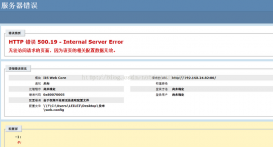一直有自己写个框架的想法,但是一直没有行动起来,最近比较闲,正好可以开工了.
现在已经完成了两部分.1.一个简单仓储,实现使用的是ef 2.IOC部分,这里是把内置的ioc替换成了aotofac,这部分感觉还是有一点缺陷的.下面说
仓储部分
这里主要是接口是实现,目前使用ef实现了仓储的接口.看一下代码
|
1
2
3
4
5
6
7
8
9
10
11
12
13
14
15
16
17
18
19
20
21
22
23
24
25
26
27
28
29
30
31
32
33
34
35
36
37
38
39
40
41
42
43
44
45
46
47
48
49
50
51
52
53
54
55
56
57
58
59
60
61
62
63
64
65
66
67
68
69
70
71
72
73
74
75
76
77
78
79
80
81
82
83
84
85
86
87
88
89
90
91
92
93
94
95
|
public interface IRepository<TEntity, TPrimaryKey> where TEntity : class{ #region Select/Get/Query IQueryable<TEntity> GetAll(); IQueryable<TEntity> GetAllIncluding(params Expression<Func<TEntity, object>>[] propertySelectors); List<TEntity> GetAllList(); Task<List<TEntity>> GetAllListAsync(); List<TEntity> GetAllList(Expression<Func<TEntity, bool>> predicate); Task<List<TEntity>> GetAllListAsync(Expression<Func<TEntity, bool>> predicate); T Query<T>(Func<IQueryable<TEntity>, T> queryMethod); TEntity Get(TPrimaryKey id); Task<TEntity> GetAsync(TPrimaryKey id); TEntity Single(Expression<Func<TEntity, bool>> predicate); Task<TEntity> SingleAsync(Expression<Func<TEntity, bool>> predicate); TEntity FirstOrDefault(TPrimaryKey id); Task<TEntity> FirstOrDefaultAsync(TPrimaryKey id); TEntity FirstOrDefault(Expression<Func<TEntity, bool>> predicate); Task<TEntity> FirstOrDefaultAsync(Expression<Func<TEntity, bool>> predicate); TEntity Load(TPrimaryKey id); #endregion #region Insert TEntity Insert(TEntity entity); Task<TEntity> InsertAsync(TEntity entity); #endregion #region Update TEntity Update(TEntity entity); Task<TEntity> UpdateAsync(TEntity entity); TEntity Update(TPrimaryKey id, Action<TEntity> updateAction); Task<TEntity> UpdateAsync(TPrimaryKey id, Func<TEntity, Task> updateAction); #endregion #region Delete void Delete(TEntity entity); Task DeleteAsync(TEntity entity); void Delete(TPrimaryKey id); Task DeleteAsync(TPrimaryKey id); void Delete(Expression<Func<TEntity, bool>> predicate); Task DeleteAsync(Expression<Func<TEntity, bool>> predicate); #endregion #region Aggregates int Count(); Task<int> CountAsync(); int Count(Expression<Func<TEntity, bool>> predicate); Task<int> CountAsync(Expression<Func<TEntity, bool>> predicate); long LongCount(); Task<long> LongCountAsync(); long LongCount(Expression<Func<TEntity, bool>> predicate); Task<long> LongCountAsync(Expression<Func<TEntity, bool>> predicate); #endregion} |
下面是实现的部分代码,代码比较占版面,就不贴全了.
|
1
2
3
4
5
6
7
8
9
10
11
12
13
14
15
16
17
|
public abstract class RepositoryBase<TEntity, TPrimaryKey> : IRepository<TEntity, TPrimaryKey> where TEntity : class{ public abstract IQueryable<TEntity> GetAll(); public abstract IQueryable<TEntity> GetAllIncluding(params Expression<Func<TEntity, object>>[] propertySelectors); public virtual List<TEntity> GetAllList() { return GetAll().ToList(); } public virtual async Task<List<TEntity>> GetAllListAsync() { return await Task.FromResult(GetAllList()); }} |
|
1
2
3
4
5
6
7
8
9
10
11
12
13
14
15
16
17
18
19
20
21
22
23
24
25
26
27
28
29
30
31
32
33
34
35
|
public class EfRepositoryBase<TDbContext, TEntity, TPrimaryKey> : RepositoryBase<TEntity, TPrimaryKey> where TEntity : class where TDbContext : DbContext{ public virtual TDbContext Context { private set; get; } public virtual DbSet<TEntity> Table => Context.Set<TEntity>(); public EfRepositoryBase(TDbContext context) { Context = context; } public override IQueryable<TEntity> GetAll() { return Table; } public override IQueryable<TEntity> GetAllIncluding(params Expression<Func<TEntity, object>>[] propertySelectors) { if (propertySelectors == null) { return GetAll(); } var linq = GetAll(); foreach (var item in propertySelectors) { linq = linq.Include(item); } return linq; }} |
注意看EfRepositoryBase继承了RepositoryBase,而RepositoryBase实现了IRepository.这里的RepositoryBase是所有实现的基类.GetAllList虚方法直接调用了抽象方法GetAll,这样在EfRepositoryBase中就可以减少很多代码了.
这里有个坑 EfRepositoryBase 是不能直接注册到IOC中的,因为EfRepositoryBase和IRepository的泛型参数个数不一致,ioc不能找到多出的一个泛型的值.使用仓储的时候继承EfRepositoryBase把dbcontext传进去就好了
|
1
2
3
4
5
6
7
|
public class TestRepository<TEntity, TPrimaryKey> : EfRepositoryBase<TestContext, TEntity, TPrimaryKey> where TEntity : class{ public TestRepository(TestContext context) : base(context) { }} |
IOC部分
asp.net core 微软提供了一个简单的IOC,但是接口比较少,替换成我们熟悉的ioc框架就方便多了. asp.net core 也有很方便的替换ioc的方法.简单说就是修改ConfigureServices方法的返回值为IServiceProvider.我使用了autofac,下面看代码.
|
1
2
3
4
5
6
7
8
9
10
11
12
13
14
15
16
17
18
19
20
21
22
23
24
25
26
27
28
|
public IServiceProvider ConfigureServices(IServiceCollection services){ services.AddMvc(); return services.AddLuna<AutofacModule>();}public static IServiceProvider AddLuna<TModule>([NotNull]this IServiceCollection services) where TModule : IModule, new(){ var builder = new ContainerBuilder(); builder.Populate(services); builder.RegisterModule<TModule>(); return new AutofacServiceProvider(builder.Build());}public class AutofacModule : Module{ protected override void Load(ContainerBuilder builder) { builder.RegisterType<TestContext>(); builder.RegisterGeneric(typeof(TestRepository<,>)).As(typeof(IRepository<,>)) .InstancePerLifetimeScope(); }} |
这里的Module和IModule是autofac的,功能已经实现了,但是作为框架来说直接暴露了autofac的东西显然是不合适的,下一步要实现一个框架自身的模块加载方式.
以上就是本文的全部内容,希望对大家的学习有所帮助,也希望大家多多支持服务器之家。
原文链接:http://www.cnblogs.com/huaface/p/7940962.html













